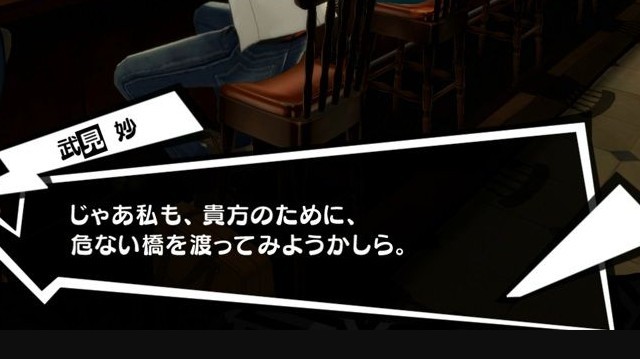The number one word used in Japanese anime, according to a study done by the Yale Anime Society, is abunai. But what does abunai mean in Japanese? And how is it often used differently from its dictionary definition?
This one word gets thrown around a lot, and you’re definitely going to get a lot of value from learning it today. Let’s begin.
What Is The Definition of Abunai?
If you look up the word abunai in a dictionary, you’ll see that it is defined as “dangerous.”
Knowing this, you can begin to use and understand it exactly like the English word that’s used in order to describe something:
- A dangerous cat.
- 危ない猫。
From the above example you will notice that abunai (from here on out referred to in its kanji form: 危ない) is an i-adjective that is used to describe nouns (as in the above), or used to say that “something is dangerous” as in the below sentence.
- It’s dangerous to play in the street.
- 道路で遊ぶのは危ない。
It can also be used to say that something is in danger, as in the following:
- Yoshiko’s life is in danger.
- 良子の命が危ない。
As a side note, the kanji that’s used in 危ない is also used to form the na-adjective word 危険 for “peril.”
However, beyond this fairly simple explanation of 危ない, there is actually another way to understand it that occurs much more often in shows and anime.
How Is 危ない Most Often Used In Anime?

Stroke order provided by: M4RC0
So there you are watching some sweet anime and all of a sudden a monster appears out of nowhere and is about to attack the main character!
His friend sees what’s happening and yells out 「危ない!」 in order to warn him of the danger.
From this one example, you can probably guess what this particular usage of 危ない means.
That’s correct, 危ない is a set phrase in Japanese that is equivalent to the English “Watch out!” , “Duck!” or “Look out!” when something bad is about to happen to someone.
This is probably where you will encounter this word most often, and it’s a great way to use it yourself when you’re playing disc golf and someone’s about to eat the disc that you just chucked.
危ない Dude!!!
The Japanese Expression That Uses 危ない
There is also a well known Japanese expression that uses 危ない and is similar to the English phrase “to go out on a limb” that you will probably come across at some point (definitely if you play Persona 5):
- 危ない橋を渡る。
This literally translates as “To cross a dangerous bridge” but what it really means is “to take risks” in order to gain or do something.
When combined with のために (for the sake of) you can see that 「貴方のために、危ない橋を渡る」 means “I’ll go out on a limb for you.” or “I’ll take the risk for your sake.”
Glossary Of Kanji in This Post
If there were any kanji that you didn’t know in this article, then check out their readings and meanings below. Here they are presented in the order that they were used:
- 危ない【あぶ・ない】(dangerous)
- 猫【ねこ】(cat)
- 道路【どうろ】(road)
- 遊ぶ【あそ・ぶ】(to play)
- 良子【よしこ】(Female given name)
- 命【いのち】(life)
- 危険【きけん】(peril)
- 橋【はし】(bridge)
- 渡る【わた・る】(to cross over)
- 貴方【あなた】(you)
Where have you encountered 危ない before? Let me know about it in the comments below!
Further Resources for Learning Japanese:
#3 Get My eBook (Secrets to Learning Japanese) for Free

またね!

Wow, this is a lot of meanings for one expression.
I’ve heard the word sometimes in anime videos and thought of the meaning of danger as sometimes it really does match the situation.
If I look at these written Japanese signs I think this is very hard to learn.
Not for me 🙂 I live in Thailand now but the writing is too hard for me to learn so far.
Yeah, I can definitely appreciate that. The written part of the Japanese language does take time and dedication in order to learn and master. There are a LOT of different charters out there that get used in everyday types of situations, so it’s not like you can really just go at it half-hearted.
This is very interesting! I love watching anime. And to be honest, I always rely on subtitles. It is good to know what Abunai truly means. Your site is very useful for learning Japanese. I will bookmark and follow you. Thank you for this very insightful post. 🙂
Hey man, it is my pleasure! Yeah, I don’t even know how many hundreds of hours I’ve spent watching anime, both with and without subtitles.
I love how different they can all be from one another, and it seems like a lot of truly great ones have been coming out recently.
That’s cool to know that the definition of the word Abunai and I liked this post a lot. There’s a lot of hidden meanings in the words written in Japanese, which can help create a better understand for those interested in different TV shows, especially anime.
Yeah, one of the interesting, and at time frustrating things about words is that they rarely have only a single meaning. If you do a search in a dictionary, you will often be presented will several potential meanings for a word, and it all depends on how it’s used.
Having both that academic knowledge of words and also a functional one as well, is the true challenge for any language learner.
This is simply awesome, I am fascinated by the Japanese characters. How difficult is to learn the writing process? I guess you must learn how to speak the language before writing, right? like any other language.
Thank you.
Jacqueline
Yeah, so the Japanese writing system can be thought of as three separate parts. The first two are called Hiragana and Katakana, and they are simply a phonetic script. Meaning that each symbol represents a sound, and nothing else.
These two scripts can each be learned and memorized in 1-3 days depending on how you go at them.
The third part is called kanji, and each symbol has the potential to represent several different meanings, and use several different readings (how you pronounce them) all depending on the context that they are used.
Add to that the fact that you’ll need to know a minimum of 2,000 (but probably want to know 3,000) in order to read most modern Japanese writings, and you can see why this final one can take a while.
Still, once you get in the hang of things it’s actually quite fun. I’ve known some people to take at intensive method and learn how to read Japanese in a short as a few months. It really depends on how you approach it.